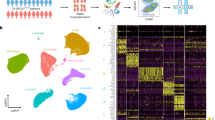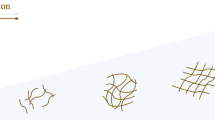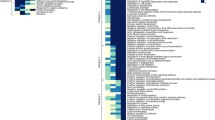Abstract
Basal-like breast cancers (BBC) exhibit subtype-specific phenotypic and transcriptional responses to stroma, but little research has addressed how stromal-epithelial interactions evolve during early BBC carcinogenesis. It is also unclear how common genetic defects, such as p53 mutations, modify these stromal-epithelial interactions. To address these knowledge gaps, we leveraged the MCF10 progression series of breast cell lines (MCF10A, MCF10AT1, and MCF10DCIS) to develop a longitudinal, tissue-contextualized model of p53-deficient, pre-malignant breast. Acinus asphericity, a morphogenetic correlate of cell invasive potential, was quantified with optical coherence tomography imaging, and gene expression microarrays were performed to identify transcriptional changes associated with p53 depletion and stromal context. Co-culture with stromal fibroblasts significantly increased the asphericity of acini derived from all three p53-deficient, but not p53-sufficient, cell lines, and was associated with the upregulation of 38 genes. When considered as a multigene score, these genes were upregulated in co-culture models of invasive BBC with increasing stromal content, as well as in basal-like relative to luminal breast cancers in two large human datasets. Taken together, stromal-epithelial interactions during early BBC carcinogenesis are dependent upon epithelial p53 status, and may play important roles in the acquisition of an invasive morphologic phenotype.


Similar content being viewed by others
Availability of Data and Materials
The datasets generated during the current study are available in the NCBI Gene Expression Omnibus (GSE162553). Other materials generated during this study are available from the corresponding author upon reasonable request.
Code Availability
The code utilized in this study is available from the corresponding author upon reasonable request.
Abbreviations
- ADH:
-
Atypical ductal hyperplasia
- BBC:
-
Basal-like breast cancer
- DCIS:
-
Ductal carcinoma in situ
- ER:
-
Estrogen receptor
- FDR:
-
False discovery rate
- FEA:
-
Flat epithelial atypia
- OCT:
-
Optical coherence tomography
- PR:
-
Progesterone receptor
- RMF:
-
Reduction mammoplasty fibroblast
- TCGA:
-
The Cancer Genome Atlas
- *:
-
Protein truncation
- LOH:
-
Loss of heterozygosity
References
Bombonati A, Sgroi DC. The molecular pathology of breast cancer progression. J Pathol. 2011;223:307–17. https://doi.org/10.1002/path.2808.
Sgroi DC. Preinvasive breast cancer. Annu Rev Pathol. 2010;5:193–221. https://doi.org/10.1146/annurev.pathol.4.110807.092306.
Allinen M, Beroukhim R, Cai L, Brennan C, Lahti-Domenici J, Huang H, Porter D, Hu M, Chin L, Richardson A, Schnitt S, Sellers WR, Polyak K. Molecular characterization of the tumor microenvironment in breast cancer. Cancer Cell. 2004;6:17–32. https://doi.org/10.1016/j.ccr.2004.06.010.
Cichon MA, Degnim AC, Visscher DW, Radisky DC. Microenvironmental influences that drive progression from benign breast disease to invasive breast cancer. J Mammary Gland Biol Neoplasia. 2010;15:389–97. https://doi.org/10.1007/s10911-010-9195-8.
Hu M, Yao J, Carroll DK, Weremowicz S, Chen H, Carrasco D, Richardson A, Violette S, Nikolskaya T, Nikolsky Y, Bauerlein EL, Hahn WC, Gelman RS, Allred C, Bissell MJ, Schnitt S, Polyak K. Regulation of in situ to invasive breast carcinoma transition. Cancer Cell. 2008;13:394–406. https://doi.org/10.1016/j.ccr.2008.03.007.
Ma XJ, Salunga R, Tuggle JT, Gaudet J, Enright E, McQuary P, Payette T, Pistone M, Stecker K, Zhang BM, Zhou YX, Varnholt H, Smith B, Gadd M, Chatfield E, Kessler J, Baer TM, Erlander MG, Sgroi DC. Gene expression profiles of human breast cancer progression. Proc Natl Acad Sci U S A. 2003;100:5974–9. https://doi.org/10.1073/pnas.0931261100.
Ma XJ, Dahiya S, Richardson E, Erlander M, Sgroi DC. Gene expression profiling of the tumor microenvironment during breast cancer progression. Breast Cancer Res. 2009;11:R7. https://doi.org/10.1186/bcr2222.
Chhetri RK, Phillips ZF, Troester MA, Oldenburg AL. Longitudinal study of mammary epithelial and fibroblast co-cultures using optical coherence tomography reveals morphological hallmarks of pre-malignancy. PLoS ONE. 2012;7:e49148. https://doi.org/10.1371/journal.pone.0049148.
Casbas-Hernandez P, D’Arcy M, Roman-Perez E, Brauer HA, McNaughton K, Miller SM, Chhetri RK, Oldenburg AL, Fleming JM, Amos KD, Makowski L, Troester MA. Role of HGF in epithelial-stromal cell interactions during progression from benign breast disease to ductal carcinoma in situ. Breast Cancer Res. 2013;15:R82. https://doi.org/10.1186/bcr3476.
Carey LA, Perou CM, Livasy CA, Dressler LG, Cowan D, Conway K, Karaca G, Troester MA, Tse CK, Edmiston S, Deming SL, Geradts J, Cheang MC, Nielsen TO, Moorman PG, Earp HS, Millikan RC. Race, breast cancer subtypes, and survival in the Carolina Breast Cancer Study. JAMA. 2006;295:2492–502. https://doi.org/10.1001/jama.295.21.2492.
Troester MA, Herschkowitz JI, Oh DS, He X, Hoadley KA, Barbier CS, Perou CM. Gene expression patterns associated with p53 status in breast cancer. BMC Cancer. 2006;6:276. https://doi.org/10.1186/1471-2407-6-276.
Cancer Genome Atlas N. Comprehensive molecular portraits of human breast tumours. Nature. 2012;490:61–70. https://doi.org/10.1038/nature11412.
Basolo F, Elliott J, Tait L, Chen XQ, Maloney T, Russo IH, Pauley R, Momiki S, Caamano J, Klein-Szanto AJ, et al. Transformation of human breast epithelial cells by c-Ha-ras oncogene. Mol Carcinog. 1991;4:25–35. https://doi.org/10.1002/mc.2940040106.
Chavez KJ, Garimella SV, Lipkowitz S. Triple negative breast cancer cell lines: one tool in the search for better treatment of triple negative breast cancer. Breast Dis. 2010;32:35–48. https://doi.org/10.3233/BD-2010-0307.
Sarrio D, Rodriguez-Pinilla SM, Hardisson D, Cano A, Moreno-Bueno G, Palacios J. Epithelial-mesenchymal transition in breast cancer relates to the basal-like phenotype. Cancer Res. 2008;68:989–97. https://doi.org/10.1158/0008-5472.CAN-07-2017.
Miller FR, Soule HD, Tait L, Pauley RJ, Wolman SR, Dawson PJ, Heppner GH. Xenograft model of progressive human proliferative breast disease. J Natl Cancer Inst. 1993;85:1725–32. https://doi.org/10.1093/jnci/85.21.1725.
Dawson PJ, Wolman SR, Tait L, Heppner GH, Miller FR. MCF10AT: a model for the evolution of cancer from proliferative breast disease. Am J Pathol. 1996;148:313–9.
Miller FR, Santner SJ, Tait L, Dawson PJ. MCF10DCIS.com xenograft model of human comedo ductal carcinoma in situ. J Natl Cancer Inst. 2000;92:1185–6. https://doi.org/10.1093/jnci/92.14.1185a.
Hu X, Stern HM, Ge L, O’Brien C, Haydu L, Honchell CD, Haverty PM, Peters BA, Wu TD, Amler LC, Chant J, Stokoe D, Lackner MR, Cavet G. Genetic alterations and oncogenic pathways associated with breast cancer subtypes. Mol Cancer Res. 2009;7:511–22. https://doi.org/10.1158/1541-7786.MCR-08-0107.
Camp JT, Elloumi F, Roman-Perez E, Rein J, Stewart DA, Harrell JC, Perou CM, Troester MA. Interactions with fibroblasts are distinct in Basal-like and luminal breast cancers. Mol Cancer Res. 2011;9:3–13. https://doi.org/10.1158/1541-7786.MCR-10-0372.
Masutomi K, Yu EY, Khurts S, Ben-Porath I, Currier JL, Metz GB, Brooks MW, Kaneko S, Murakami S, DeCaprio JA, Weinberg RA, Stewart SA, Hahn WC. Telomerase maintains telomere structure in normal human cells. Cell. 2003;114:241–53.
Johnson KR, Leight JL, Weaver VM. Demystifying the effects of a three-dimensional microenvironment in tissue morphogenesis. Methods Cell Biol. 2007;83:547–83. https://doi.org/10.1016/S0091-679X(07)83023-8.
Yu X, Fuller AM, Blackmon R, Troester MA, Oldenburg AL. Quantification of the Effect of Toxicants on the Intracellular Kinetic Energy and Cross-Sectional Area of Mammary Epithelial Organoids by OCT Fluctuation Spectroscopy. Toxicol Sci. 2018;162:234–40. https://doi.org/10.1093/toxsci/kfx245.
Krawitz BD, Mo S, Geyman LS, Agemy SA, Scripsema NK, Garcia PM, Chui TYP, Rosen RB. Acircularity index and axis ratio of the foveal avascular zone in diabetic eyes and healthy controls measured by optical coherence tomography angiography. Vision Res. 2017;139:177–86. https://doi.org/10.1016/j.visres.2016.09.019.
Buess M, Nuyten DS, Hastie T, Nielsen T, Pesich R, Brown PO. Characterization of heterotypic interaction effects in vitro to deconvolute global gene expression profiles in cancer. Genome Biol. 2007;8:R191. https://doi.org/10.1186/gb-2007-8-9-r191.
Creighton CJ, Casa A, Lazard Z, Huang S, Tsimelzon A, Hilsenbeck SG, Osborne CK, Lee AV. Insulin-like growth factor-I activates gene transcription programs strongly associated with poor breast cancer prognosis. J Clin Oncol. 2008;26:4078–85. https://doi.org/10.1200/JCO.2007.13.4429.
Curtis C, Shah SP, Chin SF, Turashvili G, Rueda OM, Dunning MJ, Speed D, Lynch AG, Samarajiwa S, Yuan Y, Graf S, Ha G, Haffari G, Bashashati A, Russell R, McKinney S, Group M, Langerod A, Green A, Provenzano E, Wishart G, Pinder S, Watson P, Markowetz F, Murphy L, Ellis I, Purushotham A, Borresen-Dale AL, Brenton JD, Tavare S, Caldas C, Aparicio S. The genomic and transcriptomic architecture of 2,000 breast tumours reveals novel subgroups. Nature. 2012;486:346–52. https://doi.org/10.1038/nature10983.
Freed-Pastor WA, Mizuno H, Zhao X, Langerod A, Moon SH, Rodriguez-Barrueco R, Barsotti A, Chicas A, Li W, Polotskaia A, Bissell MJ, Osborne TF, Tian B, Lowe SW, Silva JM, Borresen-Dale AL, Levine AJ, Bargonetti J, Prives C. Mutant p53 disrupts mammary tissue architecture via the mevalonate pathway. Cell. 2012;148:244–58. https://doi.org/10.1016/j.cell.2011.12.017.
Weiss MB, Vitolo MI, Mohseni M, Rosen DM, Denmeade SR, Park BH, Weber DJ, Bachman KE. Deletion of p53 in human mammary epithelial cells causes chromosomal instability and altered therapeutic response. Oncogene. 2010;29:4715–24. https://doi.org/10.1038/onc.2010.220.
Zhang Y, Yan W, Chen X. Mutant p53 disrupts MCF-10A cell polarity in three-dimensional culture via epithelial-to-mesenchymal transitions. J Biol Chem. 2011;286:16218–28. https://doi.org/10.1074/jbc.M110.214585.
EJ Pereira JS Burns CY Lee T Marohl D Calderon L Wang KA Atkins CC Wang KA Janes 2020 Sporadic activation of an oxidative stress-dependent NRF2-p53 signaling network in breast epithelial spheroids and premalignancies Sci Signal 13 https://doi.org/10.1126/scisignal.aba4200
Barnabas N, Cohen D. Phenotypic and Molecular Characterization of MCF10DCIS and SUM Breast Cancer Cell Lines. Int J Breast Cancer. 2013;2013:872743. https://doi.org/10.1155/2013/872743.
Neve RM, Chin K, Fridlyand J, Yeh J, Baehner FL, Fevr T, Clark L, Bayani N, Coppe JP, Tong F, Speed T, Spellman PT, DeVries S, Lapuk A, Wang NJ, Kuo WL, Stilwell JL, Pinkel D, Albertson DG, Waldman FM, McCormick F, Dickson RB, Johnson MD, Lippman M, Ethier S, Gazdar A, Gray JW. A collection of breast cancer cell lines for the study of functionally distinct cancer subtypes. Cancer Cell. 2006;10:515–27. https://doi.org/10.1016/j.ccr.2006.10.008.
Chen WC, Lai YH, Chen HY, Guo HR, Su IJ, Chen HH. Interleukin-17-producing cell infiltration in the breast cancer tumour microenvironment is a poor prognostic factor. Histopathology. 2013;63:225–33. https://doi.org/10.1111/his.12156.
Cochaud S, Giustiniani J, Thomas C, Laprevotte E, Garbar C, Savoye AM, Cure H, Mascaux C, Alberici G, Bonnefoy N, Eliaou JF, Bensussan A, Bastid J. IL-17A is produced by breast cancer TILs and promotes chemoresistance and proliferation through ERK1/2. Sci Rep. 2013;3:3456. https://doi.org/10.1038/srep03456.
Benevides L, da Fonseca DM, Donate PB, Tiezzi DG, De Carvalho DD, de Andrade JM, Martins GA, Silva JS. IL17 Promotes Mammary Tumor Progression by Changing the Behavior of Tumor Cells and Eliciting Tumorigenic Neutrophils Recruitment. Cancer Res. 2015;75:3788–99. https://doi.org/10.1158/0008-5472.CAN-15-0054.
Ma YF, Chen C, Li D, Liu M, Lv ZW, Ji Y, Xu J. Targeting of interleukin (IL)-17A inhibits PDL1 expression in tumor cells and induces anticancer immunity in an estrogen receptor-negative murine model of breast cancer. Oncotarget. 2017;8:7614–24. https://doi.org/10.18632/oncotarget.13819.
Benevides L, Cardoso CR, Tiezzi DG, Marana HR, Andrade JM, Silva JS. Enrichment of regulatory T cells in invasive breast tumor correlates with the upregulation of IL-17A expression and invasiveness of the tumor. Eur J Immunol. 2013;43:1518–28. https://doi.org/10.1002/eji.201242951.
Zhu X, Mulcahy LA, Mohammed RA, Lee AH, Franks HA, Kilpatrick L, Yilmazer A, Paish EC, Ellis IO, Patel PM, Jackson AM. IL-17 expression by breast-cancer-associated macrophages: IL-17 promotes invasiveness of breast cancer cell lines. Breast Cancer Res. 2008;10:R95. https://doi.org/10.1186/bcr2195.
Changchun K, Pengchao H, Ke S, Ying W, Lei W. Interleukin-17 augments tumor necrosis factor alpha-mediated increase of hypoxia-inducible factor-1alpha and inhibits vasodilator-stimulated phosphoprotein expression to reduce the adhesion of breast cancer cells. Oncol Lett. 2017;13:3253–60. https://doi.org/10.3892/ol.2017.5825.
Coffelt SB, Kersten K, Doornebal CW, Weiden J, Vrijland K, Hau CS, Verstegen NJM, Ciampricotti M, Hawinkels L, Jonkers J, de Visser KE. IL-17-producing gammadelta T cells and neutrophils conspire to promote breast cancer metastasis. Nature. 2015;522:345–8. https://doi.org/10.1038/nature14282.
Radosavljevic G, Ljujic B, Jovanovic I, Srzentic Z, Pavlovic S, Zdravkovic N, Milovanovic M, Bankovic D, Knezevic M, Acimovic LJ, Arsenijevic N. Interleukin-17 may be a valuable serum tumor marker in patients with colorectal carcinoma. Neoplasma. 2010;57:135–44.
Li Q, Xu X, Zhong W, Du Q, Yu B, Xiong H. IL-17 induces radiation resistance of B lymphoma cells by suppressing p53 expression and thereby inhibiting irradiation-triggered apoptosis. Cell Mol Immunol. 2015;12:366–72. https://doi.org/10.1038/cmi.2014.122.
Zhong W, Xu X, Zhu Z, Yang L, Du H, Xia Z, Yuan Z, Xiong H, Du Q, Wei Y, Li Q. Increased interleukin-17A levels promote rituximab resistance by suppressing p53 expression and predict an unfavorable prognosis in patients with diffuse large B cell lymphoma. Int J Oncol. 2018. https://doi.org/10.3892/ijo.2018.4299.
Petersen OW, Ronnov-Jessen L, Howlett AR, Bissell MJ. Interaction with basement membrane serves to rapidly distinguish growth and differentiation pattern of normal and malignant human breast epithelial cells. Proc Natl Acad Sci U S A. 1992;89:9064–8.
Weaver VM, Petersen OW, Wang F, Larabell CA, Briand P, Damsky C, Bissell MJ. Reversion of the malignant phenotype of human breast cells in three-dimensional culture and in vivo by integrin blocking antibodies. J Cell Biol. 1997;137:231–45.
Lee GY, Kenny PA, Lee EH, Bissell MJ. Three-dimensional culture models of normal and malignant breast epithelial cells. Nat Methods. 2007;4:359–65. https://doi.org/10.1038/nmeth1015.
Sadlonova A, Bowe DB, Novak Z, Mukherjee S, Duncan VE, Page GP, Frost AR. Identification of molecular distinctions between normal breast-associated fibroblasts and breast cancer-associated fibroblasts. Cancer Microenviron. 2009;2:9–21. https://doi.org/10.1007/s12307-008-0017-0.
Sadlonova A, Novak Z, Johnson MR, Bowe DB, Gault SR, Page GP, Thottassery JV, Welch DR, Frost AR. Breast fibroblasts modulate epithelial cell proliferation in three-dimensional in vitro co-culture. Breast Cancer Res. 2005;7:R46-59. https://doi.org/10.1186/bcr949.
Acknowledgements
We would like to acknowledge Katherine Hoadley, PhD, for assistance with TCGA data. We would also like to thank Yan Shi, PhD, of the UNC High-Throughput Sequencing Facility (HTSF) for assistance with Tape Station and microarray assays. The HTSF is supported in part by the UNC Lineberger Comprehensive Cancer Center and the University Cancer Research Fund.
Funding
This work was supported by P30 ES010126, U01 CA179715, and U01 ES019472 to MAT, and by R21 CA179204 and NSF CBET 1803830 to ALO. AMF received additional support from the UNC Royster Society of Fellows. AMH was supported by the UNC Program in Translational Medicine (T32 GM122741).
Author information
Authors and Affiliations
Contributions
Conceptualization: Ashley M. Fuller, Melissa A. Troester; Methodology: Ashley M. Fuller, Lin Yang, Jason R. Pirone, Amy L. Oldenburg, Alina M. Hamilton; Formal analysis and investigation: Ashley M. Fuller; Writing—original draft preparation: Ashley M. Fuller; Writing—review and editing: Ashley M. Fuller, Lin Yang, Alina M. Hamilton, Jason R. Pirone, Amy L. Oldenburg, Melissa A. Troester; Funding acquisition: Ashley M. Fuller, Amy L. Oldenburg, Melissa A. Troester; Resources: Amy L. Oldenburg, Melissa A. Troester; Supervision: Melissa A. Troester.
Corresponding author
Ethics declarations
Conflicts of Interest
The authors declare no potential conflicts of interest.
Ethics Approval
This article does not contain any studies with human participants or animals performed by any of the authors.
Consent to Participate
This article does not contain any studies with human participants performed by any of the authors.
Consent for Publication
This manuscript has been approved by all co-authors.
Additional information
Publisher’s Note
Springer Nature remains neutral with regard to jurisdictional claims in published maps and institutional affiliations.
Supplementary Information
Below is the link to the electronic supplementary material.
Rights and permissions
About this article
Cite this article
Fuller, A.M., Yang, L., Hamilton, A.M. et al. Epithelial p53 Status Modifies Stromal-Epithelial Interactions During Basal-Like Breast Carcinogenesis. J Mammary Gland Biol Neoplasia 26, 89–99 (2021). https://doi.org/10.1007/s10911-020-09477-w
Received:
Accepted:
Published:
Issue Date:
DOI: https://doi.org/10.1007/s10911-020-09477-w




